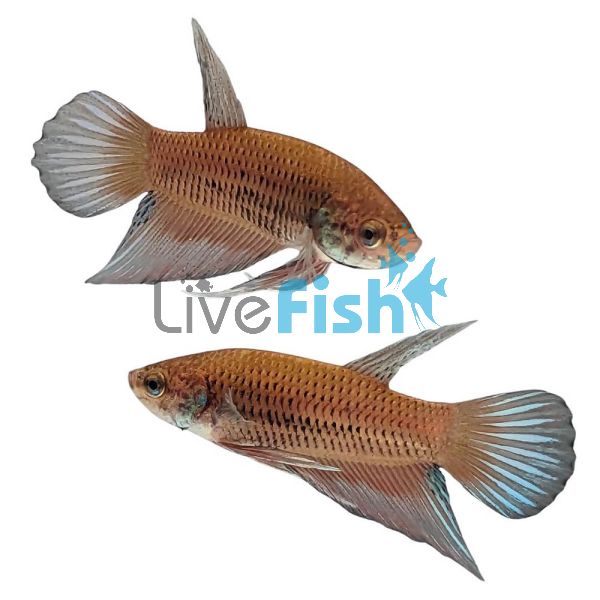Betta Benjarong Region - Wild Caught 3.5cm
The world of wild bettas is just as expansive as tetras or cichlids with a range of bettas coming from different environments, sporting different colours, growing to different sizes and even having different breeding methods. For the aquarists looking to start with their first wild species, the betta benjarong would be a fantastic consideration. These are a regional variant of the Betta splendens which is a species of fancy strains seen in the aquarium hobby; this makes them easy to care for.
Betta Benjarong Region
The world of wild bettas is just as expansive as tetras or cichlids with a range of bettas coming from different environments, sporting different colours, growing to different sizes and even having different breeding methods. For the aquarists looking to start with their first wild species, the betta benjarong would be a fantastic consideration. These are a regional variant of the Betta splendens which is a species of fancy strains seen in the aquarium hobby; this makes them easy to care for.
The betta benjarong is arguably far more stunning in comparison to man-made betta strains. These fish age like a fine wine with their mustard yellow colour, this colour is exactly what you might see on a yellow rose. The body also carries jet-black fish net-like patterns over the scales that add a fantastic contrast. The fins finally all have randomized streaks of blue, the most notable aspect is how this tail fin forms a perfect pointed spade. The really interesting thing here is that benjarong region betta also comes in a crimson red variant which is just as stunning. Although it is unclear as to which variant these fish may grow into, it makes it all the more fun to get a group and grow them out.
The betta benjarong is a species that does and loos best in a dedicated aquarium setting. Breeding these fish in captivity is an incredibly fun process and will be incredibly rewarding, it will also be a great way to spread an underrated fish in the aquarium hobby. Males build bubble nests at the surface of the water and entice the females to lay their eggs in the nest. After spawning, the male Betta will guard the eggs and newly hatched fry until they are strong enough to swim on their own.
Tank Recommendations for your Betta Benjarong Region
The aquarium conditions for betta benjarong are not all that hard to do and these fish can be kept in a very simple setup. As these fish reach around 5cm long but should be kept in a group setting a volume of 75 litres would be great. Using an aqua soil or low PH buffering substrate with driftwood, botanicals, and plants with a sponge filter would be a perfect setup for them. Temperature these fish can be kept on the cooler side with the ideal range between 22-24 degrees.
Suitable Tank Buddies
Ideally, it is best to keep this fish in a species-only environment however they are very peaceful fish and will get along with a range of nanofish.
Usually Compatible
Chilli Rasboras, Celestial Pearl Danios, Emerald Rasboras, Common pencilfish, neon tetras, and similar small, peaceful species.
Sometimes Compatible
Potentially larger species like gold gourami, lace gourami, giant danios, and similar species would be too fast or aggressive for these soft-natured fish.
Rarely Compatible
Larger fast or aggressive species such as Oscars, parrot fish, kissing gourami, and similar species.
Feeding your Betta Benjarong Region
Betta Benjarong can be incredibly shy when first introduced into the aquarium. Because of this, there should be a range of foods ready to go to entice them to eat. They should however take to flakes and nano pellets quite easily once settled into the aquarium. They can also be supplemented with frozen foods like mysis shrimp or live foods like brine shrimp.
| Scientific Name | B. splenden sp. round tail |
|---|---|
| Care Level | Easy |
| Common Names | Betta Benjarong, Yellow Benjarong Betta, Crimson Cheek Betta |
| Diet | Omnivore |
| Fish Family | Osphronemidae |
| Lifespan (years) | 5 |
| Max. Length (cm) | 5 |
| Min. Tank Volume (l) | 75 |
| Origin | Thailand |
| Reef Safe | Yes |
| Sociability | Peaceful |
| Venomous | No |
| Water Conditions | 22-26° C, pH 5.5-7.0 |




